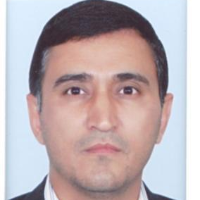Evaluation of a distributed monthly water balance model to determine catchment runoff in arid region using RS and GIS (A case study in Yazd-Ardakan basin)
Author(s):
Abstract:
Fresh water is becoming a scarce resource of the arid region. The only option left to manage with this situation is to conserve water resources. Since the amount of rainfall and evapotranspiration rate vary within a watershed, available water for surface and groundwater recharge also varies both on spatial and temporal scales. Moreover, groundwater recharge (and ultimately the total water yield) is directly influenced by the soil texture and land cover in the watershed.
In this study, the distributed Thornthwaite-Mather water balance model for the Yazd-Ardakan catchment in Iran was developed based on monthly precipitation, potential evapotranspiration maps and water holding capacity map. The amount of annual runoff from the catchment predicted by the model is 66.7 mm, which is accumulated in the plain and then salt desert. Half of discharge is contributed by the direct runoff and the groundwater contribution is significant.
A statistical comparison of the estimated and the measured stream flow of Pishkouh show the mean monthly and mean annual estimated and measured stream flows, the correlation coefficient between measured and estimated stream flows, the mean monthly and annual percentage error of estimation and the 90% confidence interval for the mean stream flow. Since the study of water balance using the TM method with the help of remote sensing and GIS was found to be very helpful in determining the amount of monthly runoff in an arid region like the Yazd-Ardakan catchment.
In this study, the distributed Thornthwaite-Mather water balance model for the Yazd-Ardakan catchment in Iran was developed based on monthly precipitation, potential evapotranspiration maps and water holding capacity map. The amount of annual runoff from the catchment predicted by the model is 66.7 mm, which is accumulated in the plain and then salt desert. Half of discharge is contributed by the direct runoff and the groundwater contribution is significant.
A statistical comparison of the estimated and the measured stream flow of Pishkouh show the mean monthly and mean annual estimated and measured stream flows, the correlation coefficient between measured and estimated stream flows, the mean monthly and annual percentage error of estimation and the 90% confidence interval for the mean stream flow. Since the study of water balance using the TM method with the help of remote sensing and GIS was found to be very helpful in determining the amount of monthly runoff in an arid region like the Yazd-Ardakan catchment.
Keywords:
Language:
Persian
Published:
Whatershed Management Research, Volume:27 Issue: 105, 2015
Pages:
16 to 26
https://magiran.com/p1638541
مقالات دیگری از این نویسنده (گان)
-
Performance Investigating of Flood Spreading System on the Groundwater Quality
Tahereh Pooramini, Farzaneh Fotouhi Firoozabad *,
Journal of Environment and Water Engineering, -
Analysis of temporal trend of changes of groundwater quality parameters (Case study: aquifer of Fathabad)
Tahereh Pooramini, Farzaneh Fotouhi Firoozabad*,
Environmental Erosion Researches,



